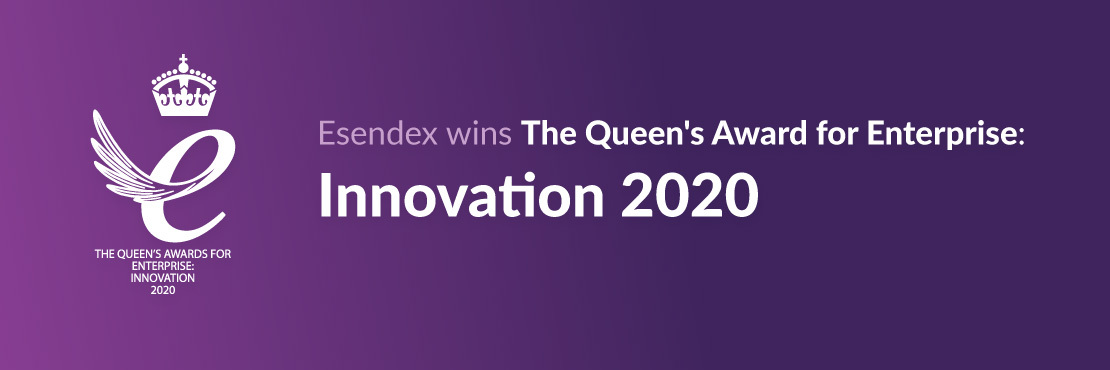
From unresponsive customers and siloed data to outdated tech and inefficient processes, here are the top debt collection challenges and how to overcome them.
- Top debt collection challenges and how to overcome them
- Frequent and fruitless attempts at communication
- Chasing the wrong person
- Not prioritising the most vulnerable customers
- Overstretched internal resources
- Disparate systems and data silos
- Overcome debt collection challenges by digitalising your communication strategy
The ideal collection process involves identifying outstanding debts, communicating with customers to collect payments, negotiating payment terms if needed, and successfully collecting payments. But in reality, missing customer data, antiquated systems, and siloed processes often lead to late payments or outstanding debt being sent to debt collection agencies (DCAs) to collect arrears. As a result, businesses chasing bad debt can incur costs of over £6 million a year.
Here are our top debt collection challenges and how technology can help you overcome them, ultimately increasing profitability and improving customer experience.
Top debt collection challenges and how to overcome them
Frequent and fruitless attempts at communication
Not all customers make payments on time, which can feel like an uphill battle. You’re left repeatedly calling unresponsive customers. While this is necessary for cash flow, it can not only frustrate your team but also irritate customers and is a drain on resources.
How technology can help
It’s important to examine your collections process and understand how your customers prefer to communicate and why payments aren’t being made.
The frustration your customers feel might not be because they’re being reminded to pay. It could be due to unclear payment options, unforeseen financial circumstances, or because they’re receiving messages through channels they rarely check or find intrusive.
Ask yourself:
- Do you have up-to-date customer contact details?
- Do you know which communication channels your customers prefer to use?
- Would customers rather receive reminders through email, SMS, WhatsApp or RCS?
- Why might payments not be made? Is the payment journey as seamless as possible?
- Can customers easily make payments via their preferred channel?
The goal should be to maximise the effectiveness of each interaction, reducing friction and encouraging prompt payment. This will help you improve debt collection and increase engagement.
Chasing the wrong person
One of the most common debt collection challenges is inaccurate or outdated contact details. When addresses and phone numbers are out of date, your collections team wastes precious time, trying and failing to connect with customers. They may even unintentionally be chasing the wrong people.
And for customers, being chased for debt that isn’t theirs can be unsettling and damage your brand reputation.
How technology can help
Empower your agents to reach the right customers at the right time with quick and easy access to accurate, up-to-date information held in a centralised CRM system. In addition to encouraging good data hygiene practices, when your CRM system is integrated with your communication channels, you’ll benefit from centralised data.
This will help your agents trust that the information they’re accessing is accurate and up-to-date, improving the likelihood that they’ll connect with the right person.
Your choice of communication channel can also help. Using the secure document sharing feature within rich messaging channels, such as RCS, allows agents to share evidence as to why the contact is being made and recipients can share photo IDs or proof of address to quickly resolve any misidentification. The direct, secure exchange not only accelerates resolution times but also demonstrates trust and transparency.
Not prioritising the most vulnerable customers
Not knowing the difference between late payments and genuine financial vulnerability has significant risks. It’s important that your systems can help you identify customers facing long-term financial difficulties who need a far more sensitive and supportive approach.
How technology can help
Data centralisation gives you a holistic understanding of a customer’s financial situation, from payment history to credit behaviour and vulnerabilities. With this information, your agents can proactively identify those who need extra care, practical solutions, and personalised support, protecting both the customer and reducing any risk to your business.
Overstretched internal resources
If you’re receiving more calls than your call centre staff can manage, it’s likely your customers are facing long hold times. This may not only reduce operational efficiency and team morale, but imagine how frustrating this is for your customers. All they want to do is make a payment or ask a question regarding their debt, and yet, they’re faced with a long virtual queue.
How technology can help
Offering a variety of ways for your customers to interact with your business, from phone and email to live chat, SMS, WhatsApp and RCS puts customers in control and gives them options to manage their debt at a time that is convenient for them, without them needing to speak to someone directly.
Where possible, automate processes. Chatbots, for instance, can help handle frequently asked questions or point customers to your knowledge base ot appropriate support resources. This can free your support team to help the more vulnerable customers who may really need their attention.
The goal is to provide customers with the same services they’ve always been used to, but in a self-serve, automated way that can be accessed at any time or place. For customers, this will improve their overall experience. For lenders, this can help improve the overall collection process and save in-house resources.
Disparate systems and data silos
Imagine you have a vulnerable customer who, after making a difficult payment or agreeing to a payment plan, receives a message or call chasing for the resolved debt. If they then receive a message or a call about that payment, which they thought had been resolved, it could lead to stress and strain their relationship with your brand.
This scenario is likely to happen if your DCA uses a disparate system or when your communication platform is not integrated with your CRM solution. When systems and data aren’t integrated effectively, it can lead to information silos and a breakdown in communication. This can lead to process inefficiencies and customer satisfaction being significantly impacted.
How technology can help
An integrated, centralised solution and bespoke mobile-based payment journeys can help debt collections teams and DCAs stay on the same page, every step of the way. For example, start by sending customers a personalised SMS message with a link to a fully branded, mobile-optimised digital portal (effectively starting their ‘payment journey’).
After verifying their identity, the customer can then:
- View/change their payment plan
- View upcoming payments
- View how much is still owed
- Request pauses
- Make payments in advance
- Set up direct debits
Integrate information from your current CRM system. After the customer completes their part, the collected data is sent back to the same CRM system. This ensures that your agents have access to a single, reliable source of truth, providing them with confidence that the information they are viewing is accurate.
This will enable your agents to confidently personalise each customer interaction, suggest relevant payment plans in real-time, offer tailored risk management strategies and more.
Overcome debt collection challenges by digitalising your communication strategy
In our global customer engagement study, we found that 69% of the 5,000 respondents surveyed don’t want to talk to someone about their problems if they are struggling financially. More than 37% would rather self-manage their personal affairs via a secure system that eliminates the need for human contact.
Consequently, one final challenge faced by debt collection teams that we haven’t yet mentioned is the need to digitalise their communications. Instead of relying on traditional letter or phone call, accelerate your communications by sending digital reminders – e.g. via email, SMS or RCS messages. Not only are these routes much faster, more cost-efficient and engaging than letters and phone calls, but they also allow your customers to take control of their personal financial affairs.
For example, a personalised SMS message can include a link to initiate a mobile-based payment journey, taking them to a digital portal where they can manage their own financial affairs.
This is just one example where digital communication channels can be used to create better debt collection experiences. Want to learn more? Check out our messaging solutions for banks and financial services here. Or to see our feature-rich multichannel solution in action, click below to speak to one of our experts.



